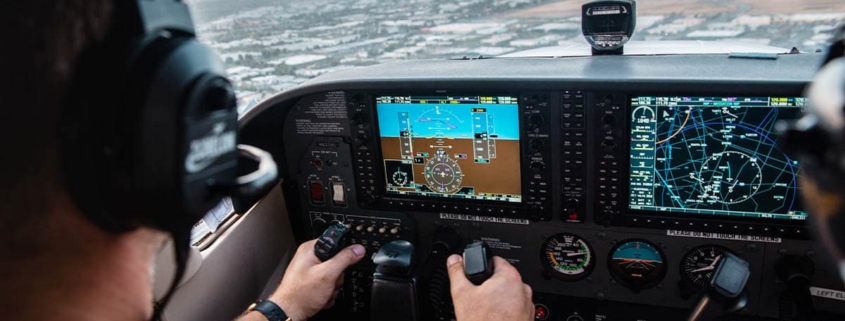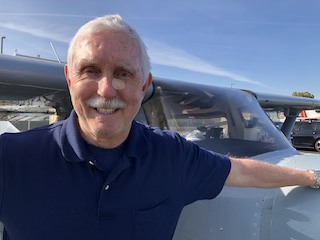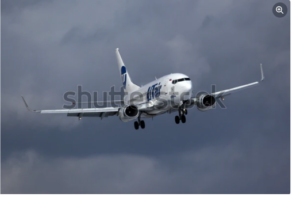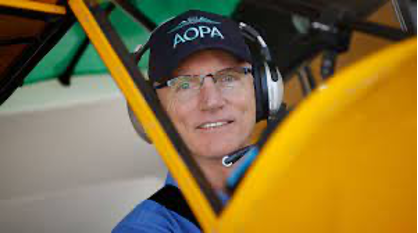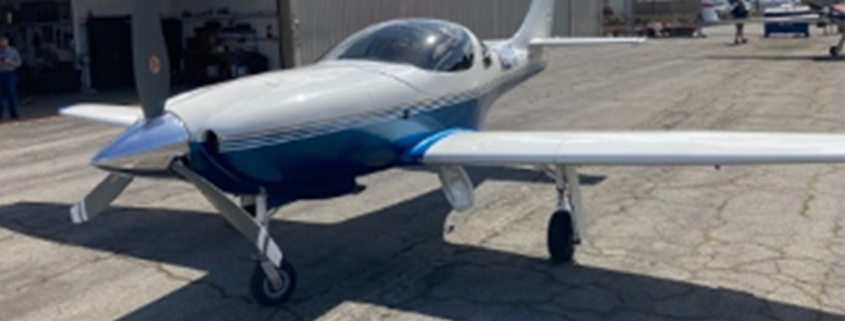How to hire the best CFI for you
/2 Comments/by John MahanyYou want to learn to fly? Great! But what is the right way to go about finding a good instructor?
Like any major purchase or investment — which this is — you want to do your homework.
Seriously — some people don’t and they later regret it.
I’ve been a CFI for over 40 years now, so I’ve seen both the good and bad. Don’t be like so many other student pilots and just go along with whoever is next on the roster. Do your research.
Click Here to read the full article at General Aviation News
John Mahany earns his Master CFI Designation for the 8th time!
/by John MahanyCrosswinds, anyone?
/by John MahanyIts springtime! Windy, gusty days are here, and the weather patterns are changing while we go from winter to summer weather. Do you hate trying to land on windy days with crosswinds? I used to! So you are not alone
Yep, back when I was learning to fly, crosswinds were a BIG challenge to me in the Cessna 150 that I was flying. Lots of work, and lots of over-controlling and bad bounces trying to get it right, cross controlling with the ailerons and rudder! It was a real challenge, especially on a narrow runway! I scared myself many times!
I was over controlling of course, hands (ailerons/elevator) and feet (rudders) out of sync and bouncing down the runway!?! Oh my!! My first crosswind landings were ugly!! Maybe controlled crashes would be a better description. Fortunately, the Cessna 150 has very sturdy, forgiving landing gear, and it took the punishment well. Oh yeah. It took time to figure them out. But, I survived and eventually figured out the technique!! Now I use it on everything that I fly, adapting as necessary on the wide variety of aircraft I have flown over the years.
So, how do you feel about crosswind takeoffs and landings? Maybe you try to avoid them. Many pilots do. Takeoffs seem to be easier. Landings are a challenge, depending how strong the winds are and what you are flying. Every airplane will be a bit different.And, guess what? Crosswind landings are discussed in the March 2024 issue of Aviation Safety (AS) Many pilots have trouble with crosswinds. They don’t get enough regular practice. ‘AS’ calls it crosswind authority! In other words, are you using enough of the airplanes ‘control authority’, which means are you using the rudder enough?
So, how do you know if you have a crosswind? Easy enough. Either the ATIS or ASOS/AWOS will be reporting the winds, and the windsock will show it as it stands straight out and moves with the wind. And you can watch the airplane ahead of you on final, if there is one, to see how it is doing. And when on final approach, the airplane will not stay lined up with the runway. It will be drifting off to the downwind side, with the wind. So, your challenge is to stay lined up with the runway on final, correcting as needed.
Some days it takes constant small corrections. Just depends. Then, when you finally get into the flare, I personally maneuver so as to line up on the upwind 1/3 of the runway, with a bit more speed than normal, and when I am in the flare, with speed dissipating, the airplane will be drifting towards the centerline, and I am applying aileron INTO the wind as needed, and opposite rudder as needed, in an attempt to stay lined up over the centerline. And I apply enough forward pressure, as needed on the yoke, and carry enough power as needed, to keep control, and then try to apply enough upwind aileron to have the upwind tire touch down first, then roll out slightly to the opposite side to lower the downwind tire onto the runway, and finally lower the nose to get it firmly on the runway and tracking straight, before applying the brakes.
Notice I keep saying, ‘as needed’ above, for everything. That is because, you have to constantly adjust the flight controls and throttle during a crosswind landing. It can be different every time. Lots of corrections, as needed!
And I also use a lesser flap setting, 0, 10 or 20 instead of 30 degrees. Less flaps gives you more speed and more control, which is what you want in a crosswind landing, depending how strong the crosswind is.
There. That’s a lot but it is a busy-few-seconds while you do this and keep control. No time to look inside. You are looking outside and taking it all in, and are ‘dancing on the controls’ as they say, whatever it takes! After a while, with enough (lots of) practice, it will get easier. I am not sure if I could describe it any better. This is just from my having done/practiced 1000’s of crosswind landings, literally, over 4 decades of flying, in many different aircraft.
Do you need help with crosswind landings? Get in touch with me and let’s schedule some crosswind landing practice in the airplane you are flying! Good luck!
Fly safely,
John.
A Tribute to Richard McSpadden – RIP Richard
/by John MahanyOn Sunday, October 1, 2023. Well-known general aviation pilot and educator Richard McSpadden ‘flew west’, quite unexpectedly. Richard had most recently served all of GA in his role as Sr. VP., AOPA Air Safety Institute, (ASI).
He and another pilot, former AFL football player Russ Francis were departing Lake Placid, New York, KLKP, in a single engine Cessna Cardinal 177RG, and shortly after takeoff the aircraft developed some kind of problem, and apparently they tried to turn back, and crashed short of the runway. Both died on impact. A tragic loss for all.
Richard was actively involved in the general aviation community, as pilot and educator. Before joining AOPA, in 2017, Richard had had 2 previous careers. He first spent 20 years in the USAF as a pilot, and during that time had become the Lead pilot for the Thunderbirds, the Air Force aerial demonstration team. And then after he retired from the Air Force, he worked in the IT industry for several years, before leaving that to join AOPA, in 2017.
Richard was well known in the general aviation world because he was actively involved. He was not ‘stuck in the office’. Instead, he participated in several general aviation organizations. He traveled and spent time in the field, as part of his work in support of aviation safety. He also wrote columns for AOPA’s Pilot Magazine. And he produced content for the AOPA Air Safety Institute’s YouTube channel. In fact, recently he was making videos offering commentary on some recent accidents, for both piston and turbine aircraft.
I had met Richard a few times while at AirVenture over the past few summers. He was always easily approachable, very personable, and there was great camaraderie with him. And he was the guest speaker in 2022 at the annual SAFE Dinner, an organization of aviation educators, of which I am one of the founding members, back in 2009. Through his work with the Air Safety Institute, he made a difference in all of our lives as pilots. Godspeed, Richard. You will be missed! Condolences to the families.
Fly safely,
John
Do you know the new ATC equipment code suffix for your airplane?
/by John MahanyI bet maybe you don’t. I thought I did, until recently. Did you know that the ATC equipment code suffixes have changed? Yup, they have! In fact, they changed about 4 years ago, in 2019! I’m talking about the suffixes, like /T or /U or /G ‘codes’ that we used to use for our avionics capability when talking to ATC or when filing a flight plan, as in, a Cessna 150/U? Well, it has changed.
So how did I learn this? Well, I have been aware of it, but I have not been using the new codes, not when flying my Cessna 150. No ATC controllers at SoCal have said anything to me. Nor any of the briefers at LEIDOS, when I have called many times for a weather briefing.
However, recently when I called Leidos, 1-800-wxbrief, for a standard weather briefing, when I initially told the briefer that my Cessna 150 was a ‘/U’, boy he called me out for this and went on a RANT! He spent several minutes reprimanding, like I shoulda known better, oops, and spelling it out in some detail, and all I could say was, sorry, I goofed. No point in arguing. Mea culpa. Yep. But gee, last summer, when flying my Cessna 150 2/3’s of the way across the country to Oshkosh for AirVenture, not one briefer made any mention of this. Hmm. Well, that’s just the way it is.
 So, what’s behind this? Well, as I see it, this is due to the introduction of so many new avionics units/devices on the market in recent years; by several manufacturers, and because of so many different GPS receivers now. And, also because of the many newer displays (glass cockpits) and transponders now, and the varying capabilities of each, the FAA has had to ‘recategorize’ avionics, according to what each does. That’s how I see it. E gads! Hard to keep up.
So, what’s behind this? Well, as I see it, this is due to the introduction of so many new avionics units/devices on the market in recent years; by several manufacturers, and because of so many different GPS receivers now. And, also because of the many newer displays (glass cockpits) and transponders now, and the varying capabilities of each, the FAA has had to ‘recategorize’ avionics, according to what each does. That’s how I see it. E gads! Hard to keep up.
So, do you know the codes for the airplane you fly? It depends on what avionics you have. Have you seen the FAA form that sort of ‘explains’ this? In the AIM, the ‘flight planning form’ is in the back, in Appendix 4. At the beginning of the Appendix are several pages of explanations. Officially, it’s FAA Form 7233-4-International Flight Plan.
I find it to be confusing! Maybe because I’ve been using the old flight planning form for so long. So, I’ll try and explain a little of it. Very briefly. With thanks to Richie Lengel, and his very popular book ‘Everything Explained for the Professional Pilot’….; instead of the suffix U which was for Transponder with Mode C Altitude Reporting and no DME, if you are flying a single engine airplane, with ‘standard avionics’ including NavCom with VOR/ILS and VHF communications, like many of us, then your equipment code/suffix is now ‘S’. And for the transponder code, now there are three choices; A, C or S. For my 150, it’s now code C. There’s MUCH more to this. But I can see I’m going to have to work on creating a pamphlet to explain this, in more detail, and better.
That’s all for now. I have my work cut out for me.
In the meantime, fly safely!
John
Lancair Legacy
/by John MahanyThe Lancair Legacy is a speedster!!
On Saturday, March 25, 2023, I was finally able to get a ride in a Lancair Legacy, an experimental aircraft!! It was awesome!!
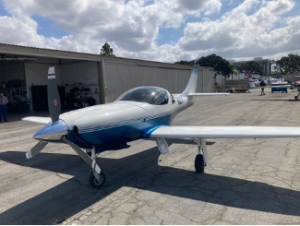 A good friend owns one. The Lancair Legacy is in the experimental category, being built from a kit. Which means, it’s not ‘FAA Certified’. It’s a small 2-seater, with just enough room for an overnight bag behind the pilot’s seats. It’s like a 2-seat sports car, with wings! You wear it!! It’s a very tight fit in the 2-seat cockpit. The engine is a 6- cylinder Continental IO-550, which puts out 310Hp at 2,700RPM, and it cruises at 276 mph!! It only weights 2,200#. So, it has a high thrust to weight ratio. The performance is impressive!
A good friend owns one. The Lancair Legacy is in the experimental category, being built from a kit. Which means, it’s not ‘FAA Certified’. It’s a small 2-seater, with just enough room for an overnight bag behind the pilot’s seats. It’s like a 2-seat sports car, with wings! You wear it!! It’s a very tight fit in the 2-seat cockpit. The engine is a 6- cylinder Continental IO-550, which puts out 310Hp at 2,700RPM, and it cruises at 276 mph!! It only weights 2,200#. So, it has a high thrust to weight ratio. The performance is impressive!
We met at John Wayne Airport (KSNA), where he keeps his Lancair Legacyi, and flew it to Camarillo, CA (KCMA), about 70 miles northwest, where we met up with several other pilot friends, for lunch, at the Waypoint Café. Their Saturday special is tri-tip sandwiches, which are delicious! The Café was filled with diners on a lovely Saturday in SoCal.
It was a beautiful day to fly here, after many, many weeks of unrelenting rain. Ugh. So glad that is over! On the way to Camarillo, I was in the right seat, just watching what my friend Henry was doing in the left seat, as this was my first time in this airplane. After takeoff, and upon reaching our cruise altitude, 4,000’, he turned on the autopilot and let it do the flying.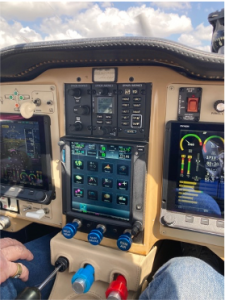
The cockpit of the Lancair Legacy is very high-tech, with a ‘glass-cockpit’ panel and voice command technology as well, which means there are synthesized voice prompts for certain things, reminding you that you are off of the assigned altitude, for example. You generally only find ‘voice command’ technology on turbine aircraft. But that is changing also. The flight time to Camarillo was about 25 minutes, at our speed of about 230 knots (260 mph).
Once at cruise, he asked if I’d like to fly! Of course! You don’t have to ask me twice! He turned off the nav mode of the autopilot and let me fly. Since we were in level flight at cruise, there was not much to do. But I carefully applied some pressure to the control ‘stick’ and the controls were very responsive. After a few minutes, I told him he could take it again.
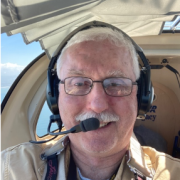 We landed at Camarillo and waited for a group of friends to arrive, a few at a time, in their various airplanes. We ordered lunch and waited and watched. It was a beautiful day to be outside, with no rain! Eventually about 15 other pilot friends had arrived, and it was a lively, jovial crowd. The food and service are good at the Waypoint Café.
We landed at Camarillo and waited for a group of friends to arrive, a few at a time, in their various airplanes. We ordered lunch and waited and watched. It was a beautiful day to be outside, with no rain! Eventually about 15 other pilot friends had arrived, and it was a lively, jovial crowd. The food and service are good at the Waypoint Café.
After a leisurely lunch and some socializing, we all left to fly back. There was actually a line of aircraft waiting to take off. Camarillo is a busy one-runway airport, bult back in the early 1940’s during WWII as an Army Training base for Air Corp Cadets. It has now created nearly 2,000 jobs and contributes nearly $230 million annually to the local economy.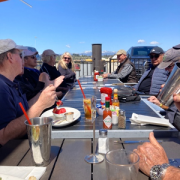
After a short delay, we were able to takeoff, and it was an uneventful flight back. About halfway back, I asked Henry if I could fly, and asked him to please turn the autopilot completely off. Before he had only partially turned it off. Now, I could get a chance to see how it flies, without automation.
Ok, so the flight controls are quite sensitive, meaning only slight pressure is required to get a response. But I was able to quickly adapt, and it handled very nicely. It was FUN!! I flew it the rest of the way back to John Wayne Airport, as SoCal Approach (the radar facility) gave us vectors to the final approach to runway 20R. Then, once on final, about 2 miles from the runway, I gave the controls back to Henry, so he could land his airplane.
It was easy enough for me to keep up with ATC as the controller gave me, in quick succession, a series of turns, and descents and then had me slow down to fit in with the flow of airline traffic on final. It was no different than any other turbine powered aircraft that I’ve flown. You just have to stay mentally ahead of it, and be able to anticipate what’s next. That is not a problem. Plus, I know the area, well.
After we landed the Lancair Legacy and taxied in and shut down, Henry congratulated me on my flying! He told me I did a really nice job, and now it’s just a matter of learning the avionics…and how they operate. Thank you, Henry! That’s the challenge now, knowing the avionics. There are several different avionics ‘vendors’, such as Garmin, Avidyne, and Dynon, to name a few, all of which have slightly different operating systems.
So, another fun day of flying! And another make and model of aircraft flown, for me. I’m now up to 148 different makes and models flown, according to my logbooks. Actually, I started an Excel spreadsheet about 3 years, ago, with all of this information, so now I know, when the aviation insurance underwriters ask, as they always do, either when I might have a contract flying job, or when I’m going to instruct someone in their airplane. How much time in a particular make/model of aircraft? That’s just the way it is now.
And on Sunday, April 2, I’m off to the east coast, Rocky Hill, CT, to spend a few days learning my new job training pilots how to fly ‘by instruments’, aka flying IFR, in their airplane, in an accelerated 10-day course. This is my new challenge. It should be fun! I’m looking forward to this.
Fly safely,
John

